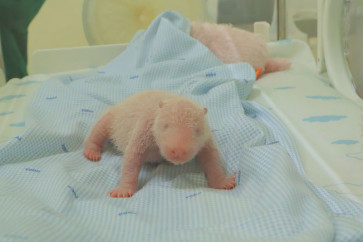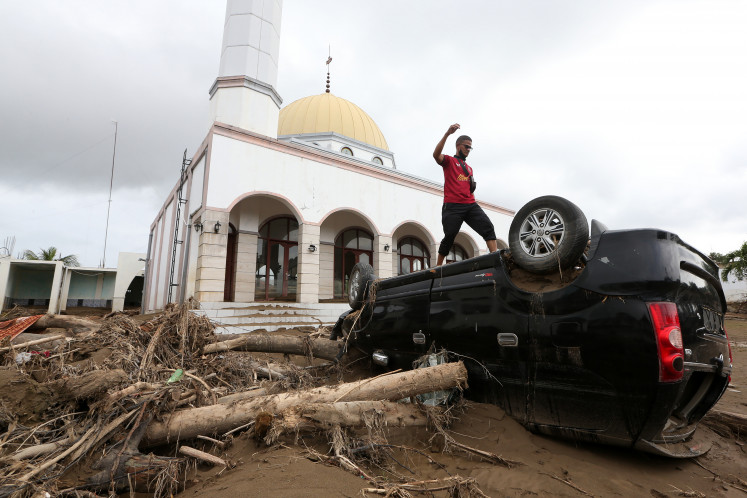Popular Reads
Top Results
Can't find what you're looking for?
View all search resultsPopular Reads
Top Results
Can't find what you're looking for?
View all search resultsTemples and memorials in historic Teluk Intan
As the third largest town in the Perak state in Malaysia, Teluk Intan's population numbers 110,000
Change text size
Gift Premium Articles
to Anyone
A
s the third largest town in the Perak state in Malaysia, Teluk Intan's population numbers 110,000. Formerly known as Teluk Mak Intan, named after a female Mandailing trader, it was where the Perak rulers held court from 1528 to 1877, before Kuala Kangsar was declared the royal town. During the British protectorate era, the name was changed to Teluk Anson (Anson Bay), in honor of British offi cer and last Lieutenant-Governor of Penang, Major-General Sir Archibald Edward Harbord Anson, who drew the plan of the modern township in 1882. In 1982, during the centenary of the town's establishment, the name was changed again to Teluk Intan (Diamond Bay) by the Sultan of Perak. The town has many colonial buildings and Chinese shophouses together with modern buildings and a few shopping complexes.
The town's main attraction is the Leaning Tower of Teluk Intan, built in 1885 by Chinese builder, Leong Choon Cheong. The tower started to tilt four years after construction was completed due to an underground stream. With a clock at the top of the tower, it still rings every 15 minutes until today. The clock tower was originally used as a water tower, supplying water to the town area, while also reporting the time to all town-folks. It also served as a beacon to guide ships into Teluk Intan Port. Currently it's a tourist attraction, and no longer stores water. The area around the tower has been paved and has become a plaza. The main street at the centre of Teluk Intan is also named after Leong Choon Cheong to commemorate his contribution to the town.
Another attraction to check out is Batu Tenggek situated at a junction in the town centre. The *sitting boulder' was believed to be placed there by a British soldier and was originally the size of a matchbox. Over the years, the small rock grew bigger until it reached the size of a boulder. Upon closer examination, you'll see a crystal-like substance throughout the rock's surface. As crystals have expanding properties, this might explain how the stone has grown. The boulder is now part of a local war memorial built to commemorate WWI and WWII. The plaque on the memorial carries a line from Laurence Binyon's famous poem, For the Fallen: "At the going down of the sun and in the morning we will remember them," and the dates of the two wars commemorated: 1914-1918, and 1939-1945.
Moving on to the Hock Soon Temple, also known as Hock Soon Keong, its origins are unknown, while the main temple building (not the original one) was built in 1883, as indicated by a legend painted on the building. Hock Soon Temple was the centre for the Hokkien Chinese community in Teluk Intan during the British colonial era. The local Hokkien people would congregate at the temple to solve various problems, from giving aid to the poor to solving fi ghts between clans. The community used to select three local Hokkien people, usually businessmen or local leaders to settle their problems. The temple was built with Southern Chinese architecture, the most notable feature being the beautifully decorated upturned eaves. There's also a century-old mosque opposite the temple, which is frequently mentioned as a typical illustration of religious harmony in Malaysia. Another signifi cant place of worship is the Sri Subramaniam Temple, popularly called *Perak Thendayuthapani Temple', built in 1926 from the contributions by the Nattukottai Chettiars (also known as the Nagarathars), a prominent mercantile community originating from Tamil Nadu, India. Popular festivals conducted in the temple are the Chitra Pournami during the Tamil month of Chithrai (April-May), which extends through three days. On the festival's third day (the day of Pournami), the Silver Chariot (Velli Ratham) is taken in a procession along the route that usually covers the entire old town of Teluk Intan. The temple is managed by Nagarathars, who represent seven towns in Perak, including Teluk Intan, Tapah, Kampar, Bidor, Sitiawan and Lumut.
They contribute every year during the festival. The daily management of the temple is entrusted to three Nagarathar families, whose offi ces are at 57, 59, and 61, Jl. Bandar, Teluk Intan.










